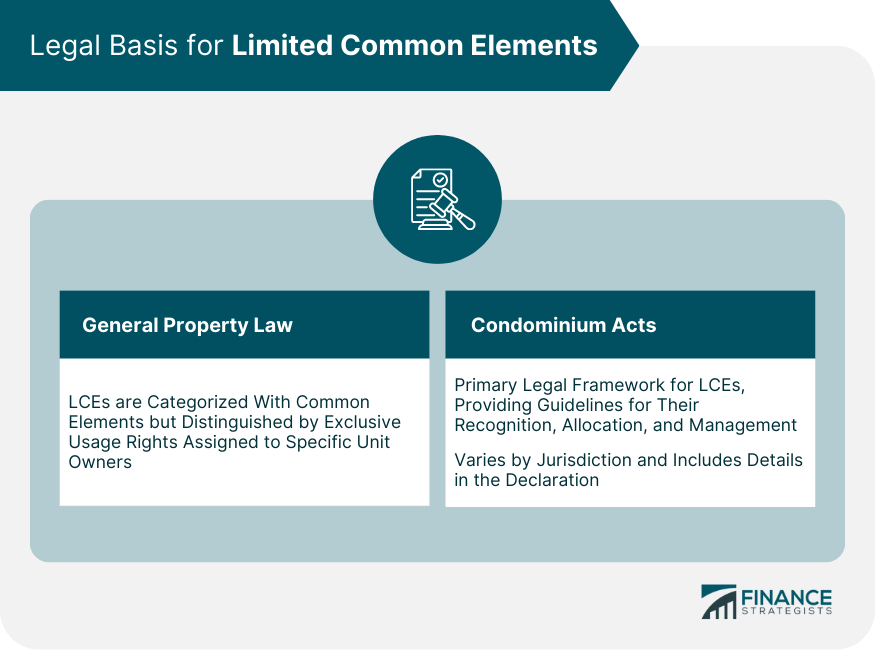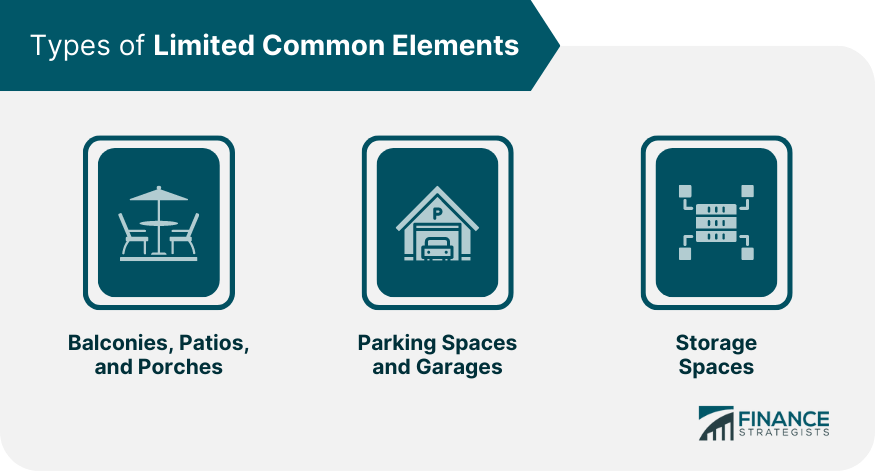Limited Common Elements (LCEs) are integral features within a condominium or similar type of shared property arrangement. By definition, LCEs are parts of the property owned collectively by all unit owners but designated for the exclusive use of a particular unit owner. Examples can include balconies, parking spaces, or personal storage areas. The purpose of identifying and assigning LCEs is to provide private amenities for unit owners while maintaining collective ownership. This allows for efficient utilization and management of property resources. The correct understanding and handling of LCEs are critical to ensuring peaceful cohabitation in shared living arrangements and can also impact aspects such as property value and insurance considerations. Therefore, for any prospective condominium owner, having a comprehensive understanding of LCEs is crucial. Common Elements and Limited Common Elements are two distinct categories within condominium ownership. Common Elements are areas like lobbies, gardens, and swimming pools, which all residents can use. In contrast, Limited Common Elements, while still owned collectively, are designated for the exclusive use of a specific resident. Examples include balconies, parking spaces, and storage units. The main difference lies in the exclusive usage rights attributed to Limited Common Elements, creating a unique blend of private and shared ownership within the condominium setup, which can contribute to the appeal and value of individual units. Under general property law, LCEs are grouped with common elements. However, a significant distinction lies in their exclusive usage rights, assigned to specific unit owners. This individual designation forms the crux of the definition of an LCE, marking them as unique components within shared property structures. Condominium Acts serve as the primary legal framework for LCEs, establishing comprehensive guidelines for their recognition, allocation, and management. The specifics of these acts can vary significantly based on geographical location and jurisdiction, reflecting regional differences in property law. These acts offer explicit instructions on how LCEs are to be allocated among unit owners, usually mandating that such assignments must be clearly outlined in the condominium's official declaration. This level of detail is critical for preventing disputes and misunderstandings, providing a clear and legally sound reference for all involved parties. Balconies, patios, and porches are quintessential examples of LCEs. Although they are architecturally integrated with the building's structure, these spaces are exclusively assigned to specific unit owners. These open spaces not only offer an extension of private living space but also contribute to the aesthetic appeal and functionality of individual units. Parking spaces and garages within a condominium property exemplify another critical type of LCEs. Despite forming part of the condominium's overall property, these are designated for the exclusive use of certain unit owners. Their value is especially prominent in urban settings where parking is a premium resource, enhancing both the convenience and marketability of the associated units. Storage spaces, which might be located in shared areas like basements or attics, can also be LCEs. These spaces, while often overlooked, play a vital role in enhancing the usability of a unit. Designated storage areas offer secure and convenient solutions for unit owners to store personal belongings, thereby increasing living space within the actual unit. The HOA or condominium board typically has the responsibility of allocating LCEs. This usually takes place during the formation of the condominium and is often clearly outlined in the condo documents or bylaws. Disputes over LCEs can arise, particularly in terms of usage or maintenance. It's the responsibility of the HOA or condo board to resolve these disputes, often through meetings, mediation, or, in extreme cases, legal actions. The existence of LCEs can directly influence property value. For instance, a condo unit with a designated parking space (an LCE) might fetch a higher price compared to a similar unit without one. LCEs can also impact a homeowner's insurance. While the building's master policy generally covers common elements, it may not always cover LCEs. Hence, unit owners should consider additional coverage for their specific LCEs. Limited Common Elements (LCEs) are a vital aspect of condominium ownership, offering private amenities like balconies, parking spaces, and storage areas, which enhance the market value of individual units while promoting efficient use of property resources. They differ from Common Elements primarily due to their exclusive usage rights, blending shared and private ownership harmoniously. Defined under general property law and Condominium Acts, LCEs have a solid legal basis, facilitating their establishment, allocation, and management. Bodies such as Homeowners' Associations play a crucial role in resolving LCE-related disputes. LCEs carry substantial financial implications, influencing property values and homeowners' insurance coverage. As a result, prospective condominium owners need to understand the unique benefits, responsibilities, and financial considerations associated with LCEs, fostering informed decision-making and peaceful cohabitation in shared living spaces.What Are Limited Common Elements?
Common Elements vs Limited Common Elements
Legal Basis for Limited Common Elements
General Property Law and Limited Common Elements
Condominium Acts and Limited Common Elements

Types of Limited Common Elements
Balconies, Patios, and Porches
Parking Spaces and Garages
Storage Spaces

Role of Homeowners' Associations (HOAs) and Condominium Boards
Allocation of Limited Common Elements
Resolution of Disputes Concerning Limited Common Elements
Financial Implications of Limited Common Elements
Impact on Property Value
Role in Homeowners' Insurance
Final Thoughts
Limited Common Elements FAQs
Limited Common Elements (LCEs) in a condominium are parts of the common property that are owned by all unit owners but are designated for the exclusive use of a specific unit owner. Examples include balconies, parking spaces, or storage spaces.
The main difference between common elements and Limited Common Elements is the exclusivity of use. Common elements, such as lobbies or swimming pools, are available for use by all residents, while LCEs are reserved for the use of specific residents only.
The Homeowners' Association (HOA) or condominium board is typically responsible for allocating and managing Limited Common Elements. They ensure that these elements are used and maintained appropriately and also handle any disputes that arise regarding LCEs.
Limited Common Elements can directly influence the value of a condominium unit. For instance, a unit with a designated parking space or a private balcony (both of which are LCEs) might have a higher market value compared to a similar unit without these features.
While the master insurance policy for the condominium typically covers common elements, it might not always cover Limited Common Elements. As such, unit owners should consider obtaining additional insurance coverage for their specific LCEs.
True Tamplin is a published author, public speaker, CEO of UpDigital, and founder of Finance Strategists.
True is a Certified Educator in Personal Finance (CEPF®), author of The Handy Financial Ratios Guide, a member of the Society for Advancing Business Editing and Writing, contributes to his financial education site, Finance Strategists, and has spoken to various financial communities such as the CFA Institute, as well as university students like his Alma mater, Biola University, where he received a bachelor of science in business and data analytics.
To learn more about True, visit his personal website or view his author profiles on Amazon, Nasdaq and Forbes.











